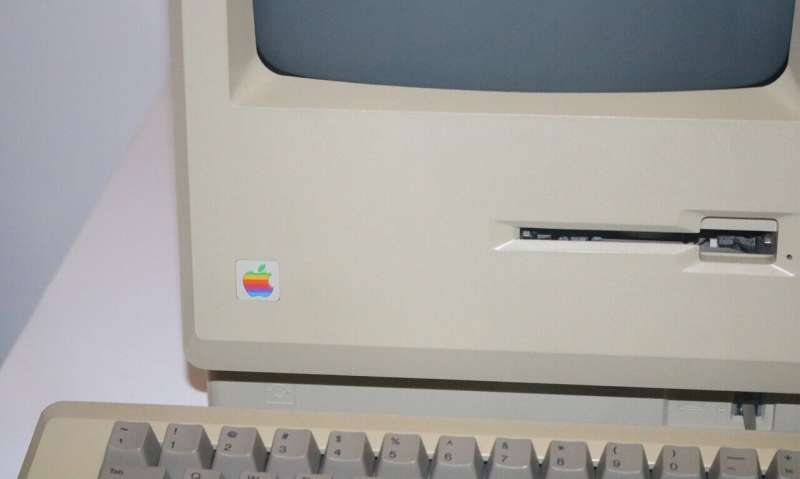Credit: Unsplash/CC0 Public Domain
Visitors can chart history inside the sprawling Computer Museum of America where the evolution of technology tells a story of the time period.
Outer space is showcased at the center of the museum with an 8-foot astronaut and a large replica of the Apollo 11 lunar lander. The space exhibit is dedicated to the 1969 moon landing and the technology that supported the mission. The lander is set over a blown-up photo of the moon floor and is only one aspect of the winding exhibit.
Commercial real estate developer Lonnie Mimms has spent nearly 50 years amassing computers of almost every kind. A fraction of his collection of age-old computers, electronic devices and vast wonders of the tech world take up 35,000 square feet in the Computer Museum of America.
Mimms and his wife Karin created the museum in a former Burlington Coat Factory in Roswell, Georgia. Going forward, the nonprofit museum will rotate exhibits that showcase the evolution of computers and their impact on life and history.
A colorful 1,100 square-foot-long wall depicts a timeline of historical facts on devices dating from B.C. to the common era, incorporating milestone events in news and pop culture with photos and graphics.
"We really want to be the Smithsonian for technology," Mimms said.
The Mimms say they want to attract visitors from across the U.S., and that will take significant funding. They opened the museum in 2019 and plan to add at least another 65,000 square feet of exhibit space on a second floor.
A fundraiser titled Byte: A Night of Cuisine, Cocktails and Computers was to take place at the museum on Thursday to help raise $80,000 for programming and operations. The museum hosts STEM summer camps and school field trips, and is a partner with Girl Scouts of Greater Atlanta.
Rena Youngblood, executive director of the Computer Museum, said another goal of the fundraiser is to build interest for funding construction of the second floor. Mimms said construction and remodeling for exhibit space will cost tens of millions of dollars.
His total collection ranges from small items such as a Sumerian tablet used for bookkeeping and inventory in 2000 B.C. to the space exhibit. The Mimms said they believe their display of 50 tall supercomputers is the largest collection in the world.
In microcomputers, Mimms' collection includes early prototypes of Apple items.
"I have a portfolio of original memos from Microsoft when they had just formed in Albuquerque, New Mexico, before they moved to Seattle. There were only nine employees," Mimms said.
"We have robots. We have music (instruments). We have cameras, drones—anything that has technology in it is part of the collection," added Karin, vice president of the museum. "We have a da Vinci robot that does surgeries. We have a 3D prosthetic maker … It's endless, which is so exciting."
Lonnie Mimms grew up in a multigenerational family of commercial real estate developers. He's CEO of the family business, Mimms Enterprises, but he's also a techie at heart. Mimms started collecting computer items in the mid-1970s and says he has accumulated more than 300,000 items.
He became fascinated with computers during childhood after attending a summer class at the Fernbank Science Center, he said. He and his best friend wrote computer programs for fun during their early teenage years, he added. They tested their programs on Saturdays at Georgia Tech, where his friend's father was a professor.
Mimms, 60, an Atlanta native, graduated from Georgia Tech with a degree in electrical engineering.
As he's become known through the years among computer collectors, some have contacted Mimms and sold their collection to him, he said.
Among his collectables is an original German Enigma machine from World War II located in an exhibit dedicated to Alan Turing. The mathematician's work is credited with cracking the Enigma code and helping to end the war.
"The breaking of the code changed the outcome of the war," Mimms said. "The best-case scenario is that it shortened the war by two years. Worst-case scenario is that it made it so the Germans didn't win and we didn't sign a treaty with them."
A collage painting capturing Turing's life is one of 12 artworks of leading contributors to technology that are commissioned for the museum.
Karin Mimms said their ability to highlight stories of technology increases the appeal to non-techies.
"We want to inspire everybody," she said. "It's great that we have three generations often that come in here and it's teaching from top to bottom."
The Computer Museum of American is located at 5000 Commerce Parkway, Roswell, Georgia. 770-695-0651, computermuseumofamerica.org.
2023 The Atlanta Journal-Constitution.
Distributed by Tribune Content Agency, LLC.






















